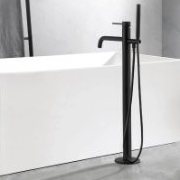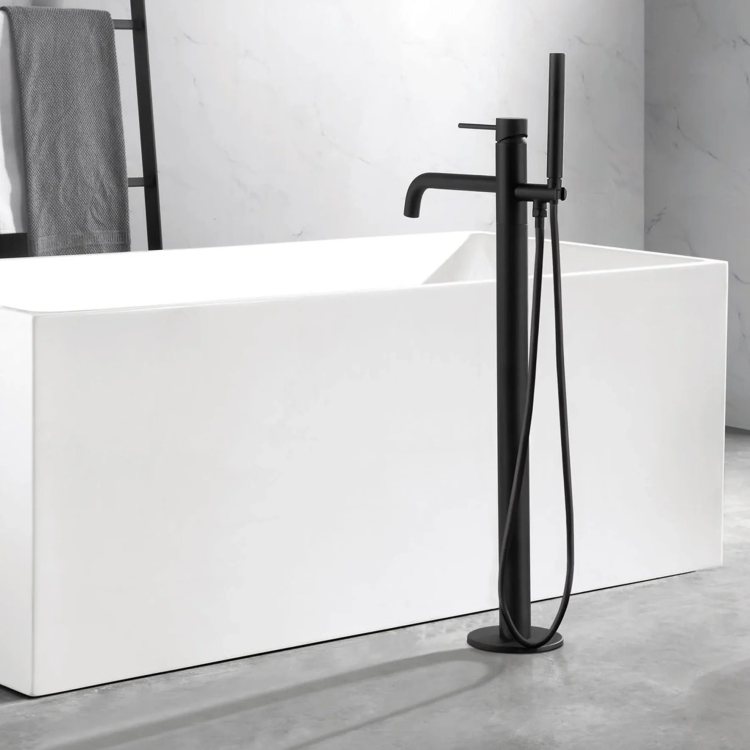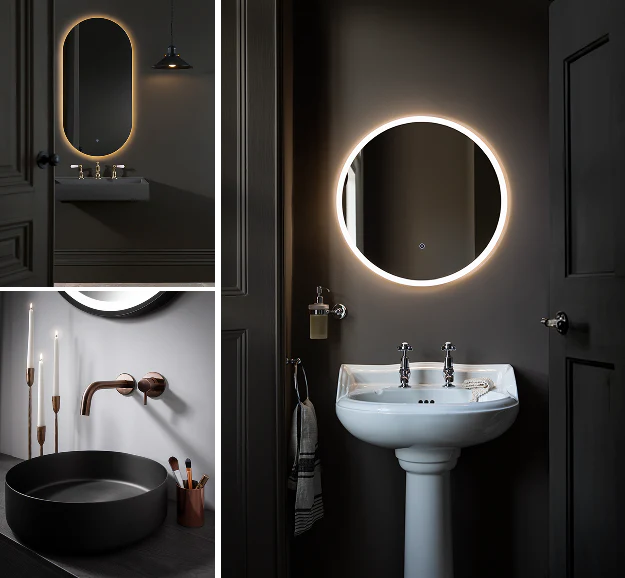All Activity
- Today
-
VasiljevicZ joined the community
- Yesterday
- Last week
-
mizsip joined the community
-
Charlie Q joined the community
-
Jack Wills joined the community
-
clasjazz cho joined the community
-
Nguyen Minh Khue joined the community
-
Igorjof joined the community
-
Shinzo Majinzo joined the community
-
Svetlwor joined the community
-
pibilo changed their profile photo
-
Jonathan Kempster changed their profile photo
- Earlier
-
I have two Onkyo MD-101A units. The first one arrived busted - impact on the jog dial during shipment cracked the display board in several places. The display showed random gibberish, but was nice and bright. I got a replacement from the seller and this one had a really dim display. After buying a digital microscope I was able to inspect and repair the display board on the first unit by bridging wires across the broken traces. Powered it back up and it worked.... but it's now just as dim as the other unit. So my question is, are they all like this? If so I'll stop bothering with Onkyo and get a Denon instead. Charlie.
-
Hi, the problem of the non-functioning display lies with the defective tantalum capacitors, and the 5V SMD stabilizer located on the button board. After replacement, the display works properly. Good luck.
-
NEOband changed their profile photo
-
Forgive my ignorance on this but i'm alittle confused as a newbie. I found a disk that has 150 mins of music on it, about 30 tracks. The music plays fine and I can skip through all tracks. The player is a Sony MZ-R70 which is a SP player only. Its not LP2 or LP4. I thought a unit had to be LP2 or LP4 compatible to play a disk that was created on a LP2 or LP4 unit. Google says the unit will play whatever the disc contains but somethings not right. However I do have some discs that will not work on this unit as they where infact made with LP2 audio. So how on earth does this disc have 150 mins of audio on it and work in the MZ-R70??? When i select to show All remaining recording time availble it says 74 mins. How can this be as it has 150 mins of audio on it. Its cool, but weird 🙂 Can someone clear up my confusion please. Much appreciated.
-
ok, so you have the driver issues sorted, that's great. I think that SS cannot handle variable bit rates (or some variable bit rates). Documentation should be in the extended (and extensive) manual which if you didn't get with a second hand unit, is easily available, either here or at minidisc.org The Tools->options has some things to look at. I couldn't find what I remembered, the "temp" thing is for making CDs which clearly need a large scratch space on HD. Then I remembered, when files are converted, the MP3 files (well, the OMA they get converted to) are put here: <whatever>\sonicstage\importedsound\Optimized Files\ Or it may have simply been the VBR restriction, if that location shows files you created with your successful transfer. A word to the wise - don't START with MP3 unless you have no choice. And even then, use Sound Forge to do the conversion, you will get a lot more options and the sound should be infinitely better. Always choose LP2 as your destination format. Hope this helps
-
Retrodavid started following sonicstage issues
-
Cheers for the reply 🙂 how do you make the temp files writable? I tried again yesterday to add some music but a different album this time and it worked. MP3 format. I'm not very familiar with the various formats out there tbh and I'll have to research the others. Just had a thought it might of been down to copyright protection on the cd?
-
Check your temporary file location is writeable. Most likely modern windows install is protecting all directories. SS has to convert files one by one after you press the transfer button. MP3 is not a good starting place for you. Don't try to run before you can walk. Get some OMA files you want to transfer and see if they can be sent to the device. If not, I would suspect strongly you didn't put the 64-bit NetMD driver in place. BTW, it's an MZ-N520, that N is the key to it being even hookable to the PC.
-
Hey guys. 🙂 So I have a Sony mz-520 that's been sat in the draw for a while that I've decided to dig out to hook up to my windows 11 laptop. I've managed to get sonicstage and the drivers on the laptop so the MD player can see the lap top but when I've tried to use it today sonicstage isn't letting me add tracks to the playlist side to record to MD. The tracks are MP3 so should be compatible. Any ideas where I'm going wrong guys? The software was downloaded from here. 4.3 ultimate
-
OK I couldn't understand some of the instructions on the link you gave; not surprising things errored out. Perhaps more importantly, yours isn't an MZ-R xx unit so the instructions are likely to be not the right ones. I suggest going to the Minidisc Wiki and download the service manual for your actual unit: https://www.minidisc.wiki/equipment/sony/portable/mz-ne410 On page 24 is the 'Overall adjustment' instructions and you can try to follow those. Normally I'd say do the preceding temperature and voltage checks but give the overall adjustment a go first - it might work.
-
Roberto Castro started following MZ-NE410 NV Reset :(
-
Hello everyone. I'm an idiot 🤦♂️. I followed this guide and ended up with the error message in the photo on my MiniDisc. https://www.minidisc.org/sony_mzr_reset.html It doesn't even move or makes the sounds of moving parts. Please help me get my device working again 🙏 Thank you very much.
-
asivery (the current developer of WMPpro and ElectronWMD) has produced replacement screens; the first batch went on sale early this morning UK time and cost less (65 EUR + 20 EUR shipping) than those from MD Gadgetry: https://lectronz.com/products/rh10-oled-module At the time of writing, there are 2 left from the initial batch ...
-
Tapron Ireland is the Irish division of the UK-based Tapron, offering premium bathroom and kitchen fixtures. Through their sleek online store, they provide luxury taps, showers, radiators, basins, and accessories crafted from high-quality materials in stylish finishes like chrome, brushed brass, and matt black.
-
Transform your space with a gold bathroom that blends timeless elegance with modern charm. From golden taps to stunning accessories, it’s the perfect way to add warmth, style, and sophistication to your home. Discover the beauty of gold – because your bathroom deserves to shine.
-
I commissioned this cover of the original track, this is only a truncated preview version, and I'm doing this for education and research purposes, so it should be covered under fair use. Here are some samples of what I mean about jitter, as if chunks of other samples were being recorded when or where they're not supposed to go. Those garbled sounds can also be heard further on the full track, intermixing with the normal sound. The track named "Jitter" was recorded on an MZ-N430D over USB, using the 4X fast SP upload option on Electron WMD. The one aptly named "NoJitter" was transferred using an MZ-N910, at 4x (no need to toggle the option, seems enabled by default on the application). Same disc, same original file, same computer, same USB cable. The only difference was the recorder. Tracks were transferred back using an MZ-RH1, into Wav format, truncated with Audacity. When transferring the track at 2x using the N430D, the sound is just as flawless as with the N910 at 4x. JitterShort.wav NoJitterShort.wav
-
I just transferred an SP track to my computer using WebMD from my RH1. You have the option to simply download, which gets saved as an .aea file, which WebMD can transfer back to MD (But only with recorders that support the SP exploits. The RH1 is NOT one of them, I've just confirmed). Or download and convert, which will get you a regular .wav file, usable by pretty much any DAP or media player out there. Hope this helps.
-
I am trying to set up a rasberry Pi 3 using a 2.60 protoneer and bcnc software. I am using a 24 volt power supply and a nema 17 bipolar stepper motor . I currently only have one stepper motor driver, the DM542T from oyostepper. The motor turns counterclockwise and runs smooth and quiet. But it turns the same way whether the forward or back button is selected or not. I swapped the wires on one of the phases and it will now turn clockwise, but still only in one direction. I can see with a voltmeter that the direction pin is high and low, so it seems to me that there may be something wrong with the stepper driver or I may have connected something wrong. I had Dir go to Dir, Enable go to enable, step go to pul, and gnd connected to all other grounds. The Opto was originally jumpered to enable the pins, and that didn't work, so I manually hooked up a 5 volt power supply to the Opto, and that didn't work, so I left the Opto disconnected and now it does what I explained above. I'm new to this hobby, so I'm guessing it's user error. Any help is greatly appreciated.
-
For sale, an entry-level Hi-Minidisc player with HD digital amp and equalizer, which will save wear and tear on your precious recorders. Thoroughly tested and cleaned by me. This player is in very good condition and plays standard Minidiscs and Hi-Minidiscs in all compatible formats and bitrates, with the exception of MP3. This player only comes with the AA/LR6 original external battery caddy, but has been tested to work with and recharge gumstick batteries, so if you have a gumstick charger, you'll be able to use both batteries at the same time for extended play. Very few minor scratches on the front and back. This is supposed to be the white model, but it looks more like a vanilla yellow to me. Does 90 USD +shipping sound okay to you? No discs, remote, cradle, AC adapter or AA/gumstick battery are included. Only the player and external battery caddy. The cradle and remote are only shown here to demonstrate functionality. I will take Paypal only, will ship through UPS ground or USPS within the USA. Canada and Europe, please PM first. Thank you.
-

MZ-N1 MZ-N10 MZ-NH1 NH3D DH10P USB cables on Ebay (not mine)
Syrius replied to Syrius's topic in Classifieds
No, Hongri-Store















